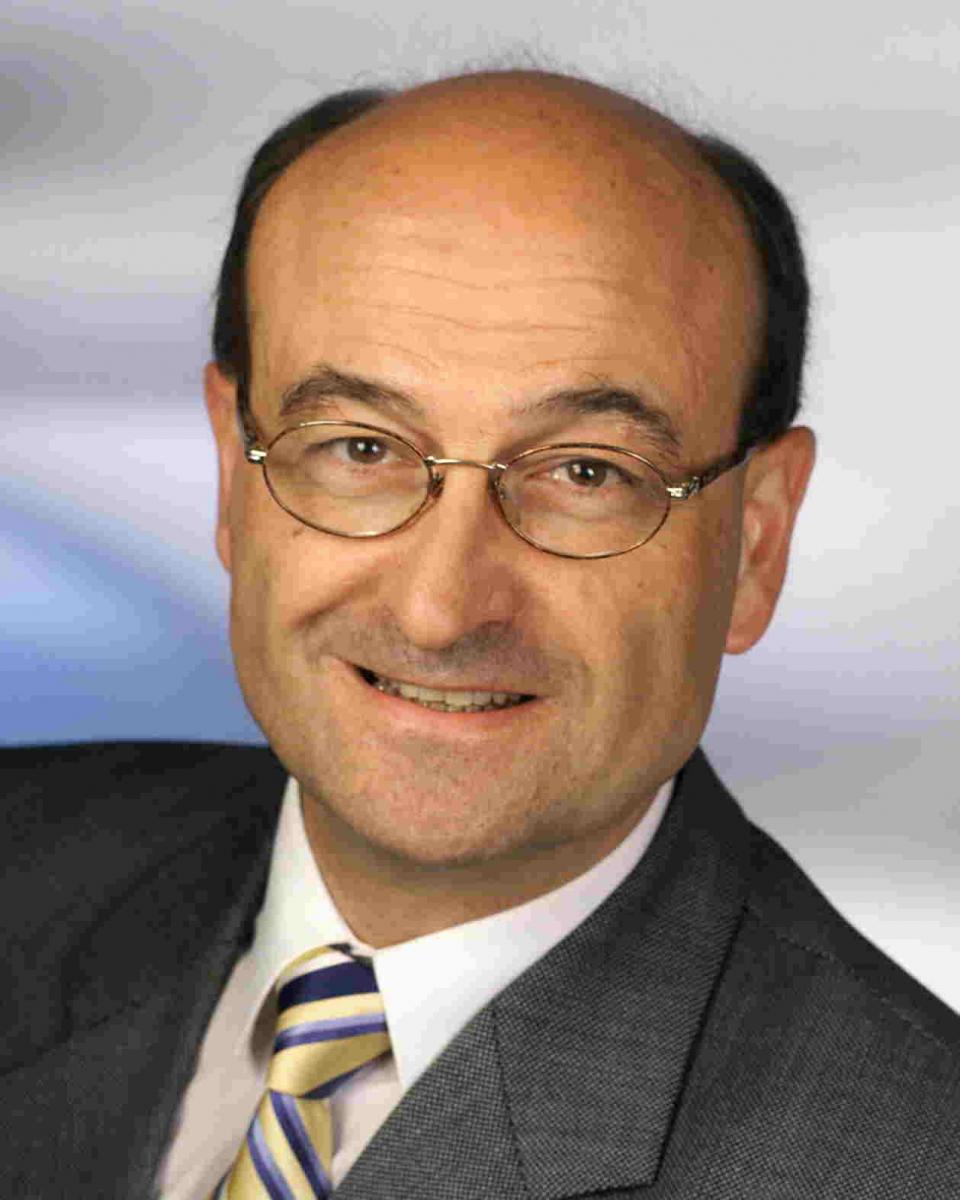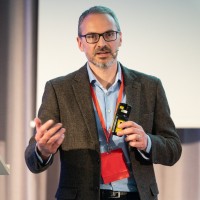Israeli Forum of Laser Materials Processing-IFLMP
Association of Engineers and Architects Israel (AEAI)
Israeli Forum of Laser Materials Processing-IFLMP
The Israeli Forum of Laser Materials Processing at the Architects and Engineers Association Israel (AEAI) kindly invites you to participate in a webinar featuring two lectures on laser materials processing.
In the first lecture, Prof. Wolfgang Kautek from the University of Vienna will discuss the mechanisms of interaction between ultrashort pulse laser and condensed matter. In the second lecture, Prof. Pasquale Franciosa from the University of Warwick will explore the effects of laser beam shaping on welding quality.
The target audience includes scientists, engineers, technical managers/directors, and influencers from advanced manufacturing companies and academia. Students, apprentices, as well as business and procurement managers who are involved in decisions related to adopting advanced manufacturing processes or developing new and improved products, are also encouraged to attend.
This webinar is endorsed by the European Materials Research Society (E-MRS).
The webinar will take place on November 19, 2024, 10:30–12:30 CET (11:30–13:30, Jerusalem Time)
Link for registration: https://www.aeai.org.il/activity/innovations-in-laser-materials-processing/
Webinar Program
10:30-11:10 CET (11:30-12:10 Jerusalem)
Speaker: Prof. Wolfgang Kautek, University of Vienna, Department of Physical Chemistry
Talk Topic: Ultrashort pulse laser-induced processes on condensed matter
Abstract: Ultrafast pulse laser energy deposition in solids is reviewed. It takes place faster than the electron-phonon-relaxation followed by processes, such as e.g. phase changes, leading to ultraprecise machining results, but also new classes of physical, chemical and biological reactions, in which directed, deterministic motions of atoms play a key role [1].
Hot electrons in thermal nonequilibrium with a metal lattice can be generated with low-energy photons from a fs-pulse laser [2]. Electrons are emitted into an adjacent acidic electrolyte as giant current pulses (up to 2×106 A cm−2 ) with durations of the order of the electron-phonon relaxation time. They reduce protons to hydrogen thus recharging the electrochemical double layer. The reduction product, hydrogen in statu nascendi, can re-inject electrons into the metal because the Fermi distribution has returned to its equilibrium state (Figure 1). The strongly superlinear dependence of the emitted charge on the laser fluence is supported by the thermoemission model.
Apertureless scanning near-field optical lithography can extend the lithography resolution. A scanning probe microscope tip was illuminated by a focused fs-laser beam and strongly enhanced the electromagnetic field in the vicinity of the tip’s apex [3]. This generated nano-modifications on a solid surface in close proximity with the tip.
Femtosecond laser generation of binary metallic oxide nanoparticles for applications in medical imaging diagnosis can be based on Liquid-Assisted Pulsed Laser Ablation (LA-PLA). Thus multimodal imaging contrast agents (MCAs) combining magnetic g-Fe2 O3 or Fe3 O4 , and W, Ta and Bi capable of responding to both X-ray radiation and magnetic fields could be generated [4].
References
- Naghilou, O. Armbruster, and W. Kautek, in “Handbook of Laser Micro- and Nano-Engineering”, Ed. K. Sugioka, Springer International Publishing, Cham 2021, p. 61-82.
- O. Armbruster, H. Pöhl, and W. Kautek, Opto-Electron. Adv. 6, 220170 (2023).
- I. Falcón Casas and W. Kautek, Springer Series in Materials Science 309, 113-132 (2020).
- A. Naghilou, O. Bomati-Miguel, A. Subotic, R. Lahoz, M. Kitzler-Zeiler, C. Radtke, M.A. Rodríguez, and W. Kautek, Ceram. Int. 47, 29363-29370 (2021).
Keywords
Sub-picosecond laser pulse applications; two-temperature model; multiphoton and avalanche ionization; non-thermal melting; the role of defects
11:10-11:50 CET (12:10-12:50 Jerusalem)
Speaker: Prof. Pasquale Franciosa , Reader (Associate Professor) and Head of the Laser Beam Welding laboratory at WMG, the University of Warwick, UK
Talk topic: Is laser beam shaping a game changer to improve weld quality of challenging material combinations?
Abstract: With unprecedented advancements in ultra-fast scanning technologies and new ways to shape the laser beam via beam forming and beam shaping, new avenues are being explored to tailor weld profile and microstructure, while optimising the functional performance of welded structures. The focus of the presentation will be on how laser beam shaping can control weld profiles, stabilise keyhole and molten pool dynamics, refine microstructure and manage intermetallics’ formation to join similar and dissimilar materials. The discussion will be supported by metallographic data, high-speed video data, in-process sensors and multi-physical CFD simulations. Case studies will be drawn from manufacturing of battery packs (cell-to-tab welding, busbar welding, battery enclosure) and e-motors (hairpin welding) which require electrical and structural integrity to comply with end-users requirements. Latest research attempts using both static and ultra-fast dynamic beam shaping will be discussed and a manufacturing roadmap highlighting challenges and opportunities will be also depicted.
Keywords:
Laser welding, laser beam shaping, tailored weld properties, manufacturing roadmap
11:50-12:20 CET (12:50-13:20 Jerusalem) Q&A
About the speakers:
 |
Prof. Wolfgang Kautek University of Vienna Department of Physical Chemistry Währinger Strasse 42 A-1090 Vienna Austria wolfgang.kautek@univie.ac.at, https://orcid.org/0000-0003-2772-2049 |
Wolfgang Kautek holds academic degrees from the Vienna University of Technology, Austria, and from the Technische Universität Berlin, Germany, and served as a research scientist at the University of Kentucky, USA, at the Fritz-Haber-Institute of the Max-Planck-Society, Berlin, at the IBM San Jose Research Laboratory, California, and the Siemens Research Center, Erlangen, Germany, from 1976 to 1987. 1988 he became head of the Laboratory for Thin Film Technology of the Federal Institute for Materials Research and Testing, Berlin, and Adjunct Professor at the Free University Berlin. 2004 he was appointed to the University of Vienna, Austria, as full-professor for physical chemistry. He served as Russell Severance Springer Professor at the Department of Mechanical Engineering of the University of California, Berkeley, in 2017. He conducts research in nanotechnology and laser processing of interfaces, also in the area of cultural heritage science. More than 230 scientific publications and 4 patents were authored by him.
 |
Prof. Pasquale Franciosa Reader (Associate Professor) Head of the Laser Beam Welding laboratory WMG University of Warwick U.K. p.franciosa@warwick.ac.uk |
Pasquale Franciosa is Reader (Associate Professor) and Head of the Laser Beam Welding laboratory at WMG, the University of Warwick. His focus is on improving the understanding of laser-to-material interaction, development of novel welding strategies to weld similar and dissimilar materials, and deployment of smart welding systems powered by applications of machine learning/artificial intelligence and multi-disciplinary optimisation. PI of prestigious large collaborative EU projects (Lasers4NetZero and Lasers4MaaS) focusing on laser beam shaping and high-speed scanners for laser welding, application of artificial intelligence for quality control, advanced process simulation and predictive lifecycle and sustainability analysis for EV manufacturing. In 2010 PhD in Mechanical Engineering Systems at the University of Naples Federico II. Prior to that Teaching Assistant at MIT (Boston - USA) undertaking research on robotics, motion and constraint analysis. Published 100+ papers, received five best-paper awards and one industrial award for his work on remote laser welding of aluminium panels. His collaborative result-driven approach has consistently promoted reputation and trust across a strong network of collaborators. This has attracted collaborative research grants with a range of industry partners and large end-users, in addition to significant in-kind contributions and knowledge transfer partnerships with UK SMEs. The breadth of industry applications includes automotive, aerospace and micro-mobility.

